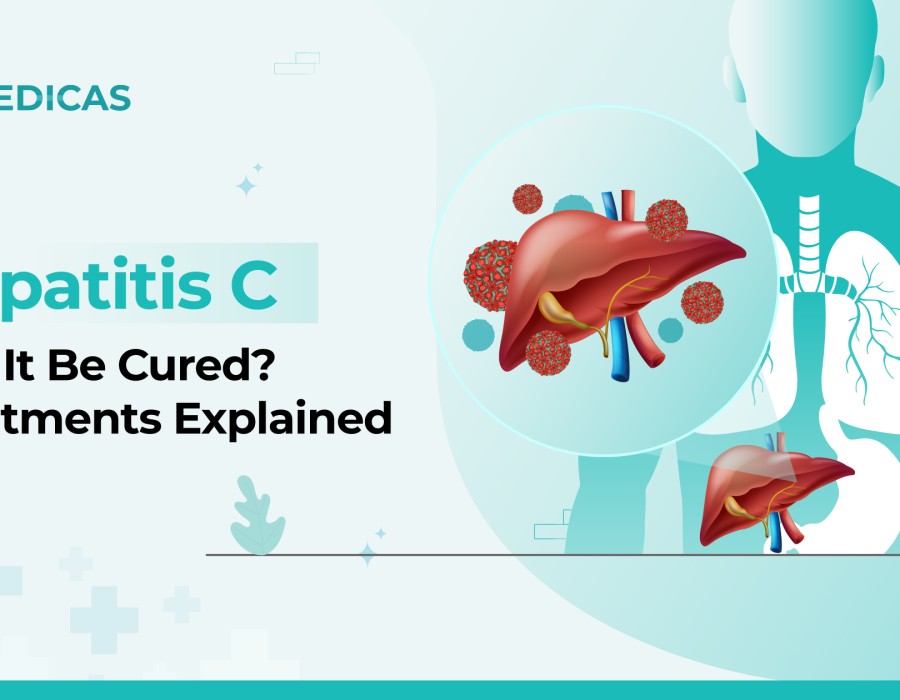Here’s an article on the topic “Can Hepatitis C Be Cured? Treatment Methods Explained” written in a professional, consumer-friendly style, suitable for a telemedicine landing page or health education site:
Can Hepatitis C Be Cured? Treatment Methods Explained
Understanding Hepatitis C and How It Affects the Body
Hepatitis C is a viral infection that primarily attacks the liver. Left untreated, it can lead to serious complications including liver fibrosis (scarring), cirrhosis, liver failure and even liver cancer. Early detection and timely treatment are key to preventing long-term damage. (Cleveland Clinic)
In its acute (early) phase, Hepatitis C may cause minimal or no symptoms — which is why many people remain unaware they have the virus. Over time, chronic infection causes low-level inflammation and progressive liver damage. (catie.ca)
Signs, Symptoms and Risk Factors
Symptoms of Hepatitis C may include:
- Fatigue, general weakness
- Jaundice (yellowing of the skin or eyes)
- Dark urine or pale stools
- Abdominal discomfort (especially in the upper right side)
- Loss of appetite and nausea
- However, many people experience no symptoms until liver damage has progressed significantly. (Cleveland Clinic)
- Risk factors include:
- Exposure to infected blood (for example via sharing needles, unsafe tattooing/piercing equipment)
- Past blood transfusion prior to screening protocols
- Being born to a mother with Hepatitis C
- Co-infection with other liver-mediating viruses (e.g., Hepatitis B) or other medical conditions
- These factors mean individuals at risk should undergo screening and evaluation. (CDC)
Is Hepatitis C Curable?
Yes — the good news is that Hepatitis C can be cured in most cases, thanks to modern antiviral treatments. According to the World Health Organization, direct-acting antiviral medications can cure more than 95 % of people who receive proper treatment. (World Health Organization)
What does “cure” mean here? It means that the virus becomes undetectable in the blood 12 weeks (or more) after treatment ends. This state is called a sustained virologic response (SVR) and is associated with long-term favourable outcomes. (Healthline)
However: being cured does not make someone immune to future infection. If a person is re-exposed to the virus, they may become infected again. (nhs.uk)
Treatment Options & How They Work
The standard treatment today uses direct-acting antiviral (DAA) medications, which target specific viral proteins and stop the virus from replicating. This allows the body’s immune system to clear the infection. (catie.ca)
Key points about DAA treatment:
- Takes oral pills (no injections required in most cases)
- Duration typically 8 to 12 weeks, depending on the regimen and patient profile. (Mayo Clinic)
- Cure rates exceed 90–95% in most treated cases. (Canada)
- Side-effects are generally mild compared to older treatments (such as interferon). (The Hepatitis C Trust)
- Choosing the right drug combination depends on factors like the viral genotype (strain), whether liver damage is present, prior treatment history, and any co-existing conditions. (Johns Hopkins Medicine)
- In older times (before DAAs), treatment with interferon + ribavirin achieved much lower cure rates (~50–60%) and was associated with more adverse effects. (PMC)
Lifestyle Measures and Supportive Care
While medication is the cornerstone of cure, supporting liver health via lifestyle changes enhances outcomes and overall wellbeing:
- Avoid alcohol and other known liver-toxins
- Eat a balanced, liver-friendly diet; stay hydrated
- Maintain healthy weight and engage in regular exercise
- Avoid unnecessary or liver-risky medications or supplements
- Get vaccinated for Hepatitis A and Hepatitis B if not already immune (to prevent additional liver damage)
- These combined measures help the liver recover, reduce future risk and support overall health. (catie.ca)
Preventing Hepatitis C
Prevention remains critically important even in the era of curative treatments. Key prevention strategies:
- Use sterile, single-use needles for injections; avoid sharing needles or equipment
- Ensure tattoos or piercings are done with sterile, proper equipment
- Safe handling of blood-exposure risks in healthcare or other settings
- Screening of blood products (which is now standard in many countries)
- Practising safe behaviours if at risk of exposure
- Currently, unlike for Hepatitis A and B, there is no vaccine for Hepatitis C — so avoidance of exposure is the main preventive tool. (Canada)
When to See a Doctor
Seek medical attention if you have:
- Known exposure to the virus (blood exposure, high-risk behaviour)
- Symptoms suggestive of liver disease (jaundice, dark urine, abdominal pain)
- A positive screening test for Hepatitis C
- Early diagnosis makes treatment simpler, safer and more effective. If left untreated, chronic Hepatitis C may progress silently to serious liver disease. (CDC)
Conclusion
In the past, a diagnosis of chronic Hepatitis C often meant long, difficult treatment and uncertain outcomes. Today, thanks to medical advances, many people can receive oral medication for a few months and achieve a cure, thereby preventing years of liver damage and greatly improving quality of life.
If you believe you might have been exposed to Hepatitis C — or if you have any liver-related symptoms — it’s important to consult a qualified healthcare professional without delay. Early screening, appropriate antiviral treatment and protective lifestyle choices offer the best path to a healthy liver and a healthy future.
If you like, I can customise this article specifically for a city (e.g., Visakhapatnam) or format it for a landing page with SEO keywords. Would you like that?





Comments